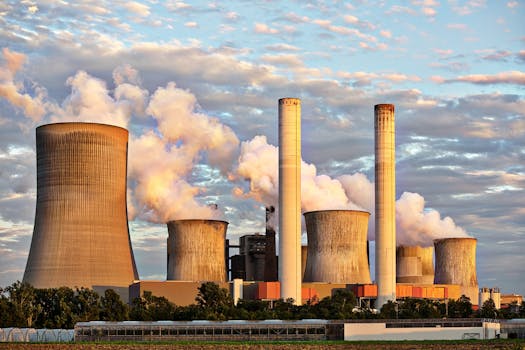
**
India Chemical Factory Blast Death Toll Soars to 36: Gujarat Tragedy Sparks Safety Concerns
The death toll from a devastating chemical factory blast in Gujarat, India, has tragically risen to 36, authorities confirmed late Thursday. The explosion, which occurred at a chemical manufacturing facility in the Bharuch district, sent shockwaves through the region and ignited widespread concerns about industrial safety regulations. The incident, which unfolded on Wednesday evening, has left dozens injured, many critically, and sparked a frantic rescue and recovery operation. The explosion's impact has also raised serious questions about the adequacy of safety measures in India's burgeoning chemical industry.
The Blast: A Devastating Event
The explosion occurred at approximately 7:00 PM local time at the chemical factory, located near the town of Jhagadia. Initial reports indicated a massive blast followed by a significant fire, engulfing a large area of the facility. The intensity of the explosion was such that it damaged nearby structures and caused panic among residents in surrounding villages. Eyewitnesses described a scene of chaos and devastation, with plumes of black smoke billowing into the sky, visible for miles. The blast’s sheer force underscores the urgent need for stricter safety protocols within Indian chemical plants.
Victims and Injuries
The official death toll currently stands at 36, but this number is sadly expected to rise as rescue workers continue to sift through the debris. Dozens more have suffered severe burns and injuries, many requiring intensive medical care. Several individuals are listed as critically injured and fighting for their lives in hospitals across the region. The extent of the injuries highlights the explosive nature of the chemicals involved and the inadequate safety precautions at the plant.
- Severe Burns: The majority of injuries are severe burns, caused by the intense heat and flames from the explosion.
- Traumatic Injuries: Many victims sustained traumatic injuries due to the force of the blast and flying debris.
- Respiratory Problems: Inhalation of toxic fumes released during the explosion is causing serious respiratory issues in several patients.
The ongoing search and rescue efforts are hampered by the unstable nature of the affected area. Rescue teams, including the National Disaster Response Force (NDRF), are working tirelessly to locate any remaining victims and provide medical assistance to the injured. The scale of the disaster has stretched the capacity of local hospitals, leading to the deployment of additional medical personnel and resources.
Gujarat Chemical Factory Blast: Investigating the Cause
While the exact cause of the explosion remains under investigation, preliminary reports suggest a potential failure of safety procedures and equipment within the chemical facility. Authorities are investigating possible violations of safety regulations and are focusing their inquiry on aspects including:
- Equipment Maintenance: A thorough examination of the factory's machinery and equipment will be conducted to determine whether inadequate maintenance played a role in the accident.
- Safety Protocols: Authorities are scrutinizing the factory's adherence to established safety protocols and regulations related to handling hazardous chemicals.
- Storage of Chemicals: The investigation will assess the safety of the storage and handling of chemicals on-site and whether any breaches of storage regulations contributed to the explosion.
- Worker Training: The level of safety training received by workers will also be a key area of investigation. This will focus on whether employees were adequately trained in handling hazardous materials and emergency procedures.
The Gujarat government has ordered a comprehensive investigation into the incident, promising stringent action against those found responsible for any negligence or violation of safety standards. This tragedy highlights the ongoing challenge of ensuring workplace safety in high-risk industrial settings, particularly within India's rapidly expanding manufacturing sector.
Implications and Future Safety Measures
The Bharuch chemical plant blast is not an isolated incident. India has seen numerous industrial accidents in recent years, many of them attributable to negligence and lax safety standards. This tragic event underscores the urgent need for:
- Strengthening Safety Regulations: The government needs to strengthen existing safety regulations for chemical plants and implement stricter enforcement mechanisms.
- Improved Workplace Safety Training: Comprehensive and regular safety training programs for all workers in hazardous industries are crucial.
- Regular Inspections and Audits: Regular inspections and audits of chemical facilities are necessary to ensure compliance with safety standards and identify potential hazards.
- Technological Upgradation: Investment in advanced safety technologies and equipment in chemical plants can significantly reduce the risk of accidents.
- Increased Accountability: Stronger accountability measures for factory owners and management are necessary to deter negligence and ensure compliance with safety regulations.
The devastating explosion serves as a stark reminder of the potential consequences of inadequate safety measures in industrial settings. The ongoing investigation and the subsequent actions taken by the authorities will be critical in preventing similar tragedies from occurring in the future. The focus now shifts to ensuring justice for the victims, providing support for those affected, and implementing substantial changes to improve industrial safety standards across India. This tragic event necessitates a complete overhaul of safety protocols and regulatory frameworks within the nation's chemical industry to prevent future occurrences. The scale of the devastation demands a robust and immediate response from both the government and the industrial sector.



















